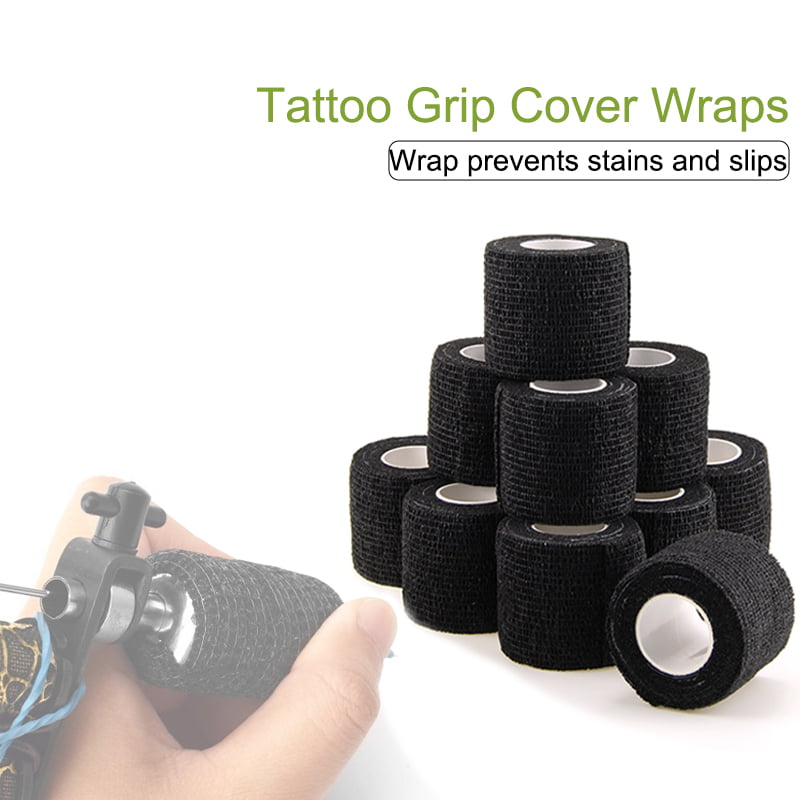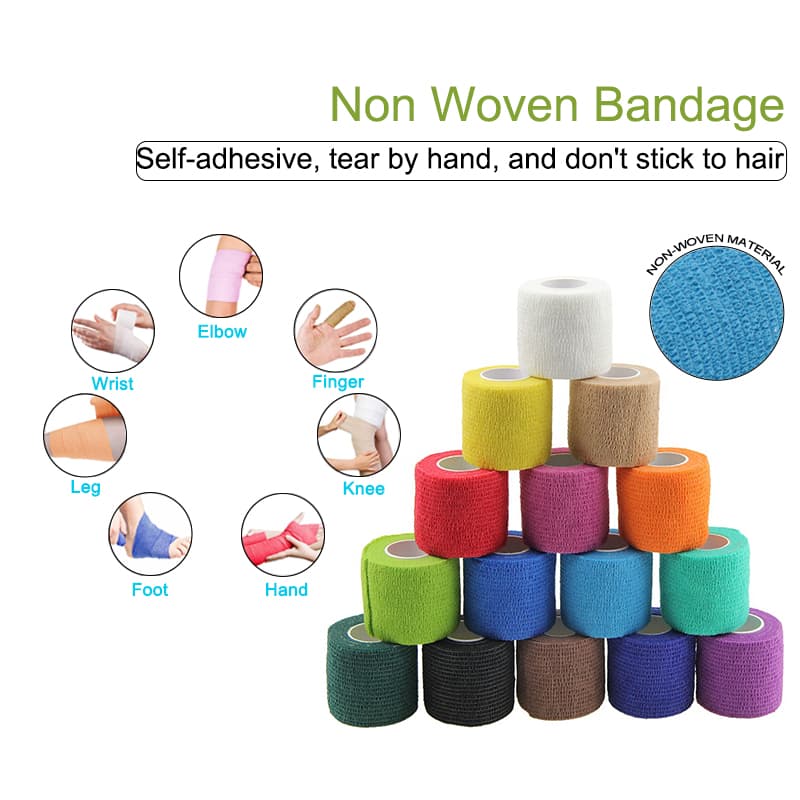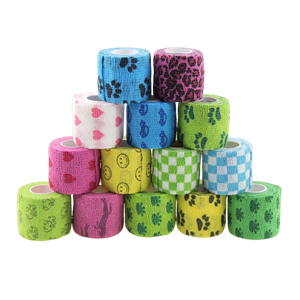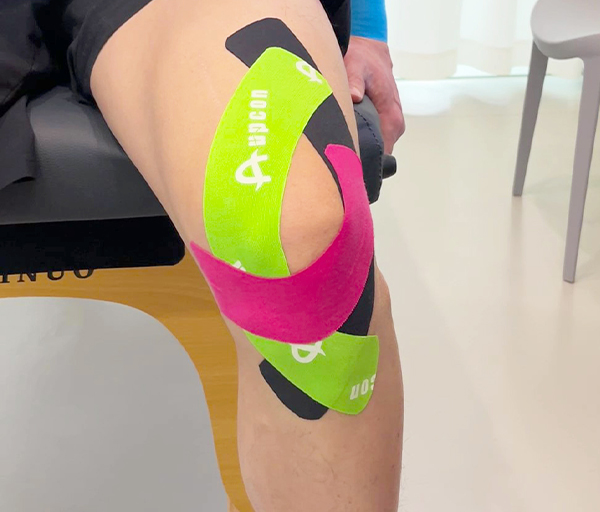If you’ve ever used traditional bandages on a wound, then you know that they can be extremely frustrating to put on and take off. Cohesive bandages are much easier to use, and in this article we’re going to talk about why they’re so much better than traditional bandages!
What is a Cohesive Bandage?
A cohesive bandage is a type of medical tape that is used to hold dressings or bandages in place. Unlike traditional medical tape, cohesive bandages are made of a material that sticks to itself, not to your skin. This makes them much easier to remove and less likely to cause irritation.
Cohesive bandages are available in a variety of widths and colors. They can be used on their own or over top of another dressing. Cohesive bandages are often used to secure IV catheters or other medical devices in place.


Why are cohesive bandages better than traditional bandages?
There are many reasons why cohesive bandages are better than traditional bandages. One of the most important is that they are far less likely to cause skin damage. Traditional bandages can often rub and chafe the skin, leading to soreness, redness, and even blistering. Cohesive bandages, on the other hand, gently adhere to the skin and can be easily removed without causing any discomfort.
Another advantage of cohesive bandages is that they provide better support and stability than traditional bandages. This is especially important for people who have injuries or conditions that require them to keep their joints immobilized. Cohesive bandages can be wrapped tightly around joints without cutting off circulation or causing pain, ensuring that the joint stays in the correct position while it heals.
Finally, cohesive bandages are much more comfortable to wear than traditional bandages.
What is the best type of cohesive bandage?
There are many types of cohesive bandages on the market, so it can be difficult to know which one is best for your wound. However, there are a few things to keep in mind when choosing a cohesive bandage.
First, consider the size and location of your wound. If you have a large or deep wound, you will need a stronger bandage that can hold up under pressure. Similarly, if your wound is located on a joint or in an area that bends frequently, you will need a bandage that can stretch and move with you.
Second, think about how long you will need to wear the bandage. If you only need it for a short period of time, you may be able to get away with a less expensive bandage. However, if you need to wear the bandage for an extended period of time, it is important to choose one that is comfortable and will not irritate your skin.
Finally, consider your budget when selecting a cohesive bandage. There are many high-quality options available at different price points. Ultimately, the best type of adhesive bandage for your wound is the one that meets your needs and fits within your budget.
-
 Finger cohesive bandage$19.99 – $21.99Rated 5.00 out of 5 based on 1 customer rating
Finger cohesive bandage$19.99 – $21.99Rated 5.00 out of 5 based on 1 customer rating -
 Printed vet wrap$21.99Rated 5.00 out of 5 based on 4 customer ratings
Printed vet wrap$21.99Rated 5.00 out of 5 based on 4 customer ratings -
 Equine vet wrap$24.99
Equine vet wrap$24.99 -
 Cotton self adhesive bandage wrap$20.99Rated 4.50 out of 5 based on 2 customer ratings
Cotton self adhesive bandage wrap$20.99Rated 4.50 out of 5 based on 2 customer ratings -
 Camouflage Bandage$21.99Rated 4.75 out of 5 based on 2 customer ratings
Camouflage Bandage$21.99Rated 4.75 out of 5 based on 2 customer ratings -
 tattoo grip cover wraps$19.99Rated 5.00 out of 5 based on 1 customer rating
tattoo grip cover wraps$19.99Rated 5.00 out of 5 based on 1 customer rating -
 non woven cohesive bandage$19.99Rated 5.00 out of 5 based on 4 customer ratings
non woven cohesive bandage$19.99Rated 5.00 out of 5 based on 4 customer ratings
How do cohesive bandages work?
Cohesive bandages are made of a material that sticks to itself but not to other surfaces, making them ideal for wrapping around injuries. The material is also flexible and stretchy, so it can be applied tightly without cutting off circulation. This makes cohesive bandages ideal for supporting sprains and strains.
To apply a cohesive bandage, simply wrap it around the injured area. The bandage will stick to itself, holding itself in place. You can then secure the ends of the bandage with tape if needed. Cohesive bandages can be removed by simply peeling them off.
Who should use a cohesive bandage?
There are many different types of wounds that can benefit from the use of cohesive bandages. These include:
-Wounds that are deep or have jagged edges
-Wounds that are bleeding heavily
-Wounds that are located in difficult-to-bandage areas (such as the hands or feet)
Cohesive bandages are also often used in combination with other types of wound dressings, such as gauze pads or hydrocolloid dressings. This can help to provide a more effective and comfortable healing process for the patient.
Differences between traditional bandages and cohesive bandages
Traditional bandages are made of cotton or other absorbent materials. They’re held in place with clips, pins, or tape. Traditional bandages can be difficult to remove, and they can cause skin irritation.
Cohesive bandages are made of synthetic materials, such as nylon or polyester. They have an adhesive coating that causes the bandage to stick to itself, but not to skin or hair. This makes them easy to apply and remove, and they won’t cause skin irritation.


Conclusion
There are many reasons to choose cohesive bandages over traditional bandages, but the three main reasons are that they are more comfortable, they provide better support, and they are easier to use. Cohesive bandages are made of a stretchy material that moves with you, making them much more comfortable to wear than traditional bandages. They also provide better support because they mold to your body and stay in place better. Lastly, cohesive bandages are easier to use because you don’t need any clips or fasteners – you can just wrap them around the area you need support and they’ll stay put. So next time you’re looking for a Band-Aid, reach for a cohesive bandage instead!
FAQ
Can I shower with cohesive bandage?
You can’t shower with it on, it will get wet. It stays on pretty good, but it will wrinkle your skin.



